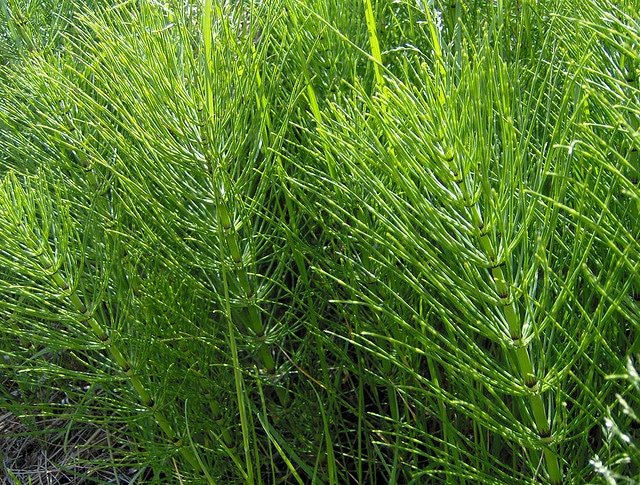My front yard has been overgrown since I moved here, but this is the year to start getting it tamed. This will be a process, since I want to salvage some of the "good" plants that invariably have been hiding there, trying not be choked out by the thistles and tall grasses. So far we've discovered salal, ferns, rush, and poppies that get to stay.
The horsetail, however, will have to go. Oh I know, it will never really be gone - I'm just starting the on-going battle! And lucky me - I have two kinds of horsetail.
What, Exactly, Are They?
Another common name for the equisetums is horsetail fern. Indeed, both plants share a common reproductive strategy: they produce spores instead of seeds.
Horsetails use this primitive method of reproduction because they are, indeed, ancient.Equisetum is the only surviving genus of the class Sphenopsida—a class that included tree-sized horsetails during the Carboniferous period 300 million years ago.
I can imagine a prehistoric forest of Douglas fir-sized horsetails growing in a humid, swampy environment. Earlier this year, I wrote a story about how heron-sized dragonflies populated the earth 250 million years ago. Just as dragonflies perch on stems of horsetail today, in my mind’s eye I can see those giant insects flitting through a horsetail forest.
http://www.northwestgardennews.com/id194.html
So instead of fussing at the stuff, I will try to remind myself they are throwbacks from the prehistoric age, and try to imagine those giant dragonflies....as I battle to regain a semblance of order in my front yard.
What's interesting is that horsetail has several uses:
“The plant at that time was as tall as a modern palm tree. Horsetail, not to be confused with cat-tail, is possibly the most abundant source of silica in the plant kingdom, so much in fact that the herb can be used for polishing metal. It got the name “scouring rush” from this very application. It has had other uses during the ages including as an ingredient in shampoos, skincare products, and in dietary supplements. The German E commission describes its use for urinary tract problems and as a diuretic.”
Whatever....it has still got to go!

No comments:
Post a Comment